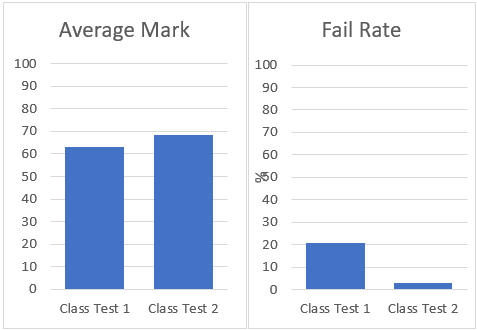Escape the classroom: a game to improve learning and student engagement
Maria Psyllou
University of Birmingham
Published August 2023
Background
Educational escape room games are increasingly prevalent in higher education as innovative tools for game-based learning. These games effectively bridge the gap between theory and practice, enhancing the overall learning experience for students. In an era where student engagement, motivation, and active participation are pivotal to effective learning, gamification offers a dynamic solution that meets the changing demands to move away from traditional teaching.
There is extensive literature supporting the fact that escape room games increase student motivation (Martina and Göksen, 2022), engagement (Eukel and Morrell, 2021), learning (Doleshal, 2022, Fuentes-Cabrera et al., 2020), performance (Makri et al., 2021), communication (Rosillo and Montes, 2021), and teamwork (Bertoni and Maffia, 2022, Clarke et al., 2017).
The module for which I developed the escape room game is a core first-year undergraduate module in the Economics programme at the University of Birmingham “Introduction to Mathematics for Economics”. I applied the game to a small cohort of students at the University of Birmingham Dubai campus. This module is taught in the first semester and has three summative assessments, class test 1, class test 2, and a final exam. (Note 1) I introduced the game as an additional support for students before their summative class test 2 as a formative practice for their revision. The game was implemented with a combination of a Cluedo story with hints.
Aim
My goal is to explore whether this type of additional support benefits student engagement and motivation, enhances active learning, communication, teamwork, and overall performance. Also, to investigate whether an alternative type of formative assessment and revision works better than the traditional way.
Design
The questions were delivered on paper and took the same structure as the summative assessment (4 questions from each topic with 5 sub-questions). It was optional and was announced in advance with students registering participation so groups could be formed in advance.
Students were placed in groups of three, based on their background and abilities, which varied due to the diverse exposure to mathematics. Therefore, I considered their differences in mathematical background and assigned them to groups of equal capabilities; each group had students from a various range of abilities and made sure that on average each group had an equal ability, emphasising the inclusivity of this activity and ensuring that each group had an equal opportunity to get involved, and solve the questions and win.
Another aspect I incorporated in the formulation of the groups was to put together students who do know each other well to enable them to meet and interact with other classmates as they were still new, in their first semester at university.
Implementation
At the beginning of the game, I asked the students to find a name for their group to create a sense of community and make the game more fun.
I introduced a Cluedo story with hints to make it more engaging and fun. The story involved five guests invited to a party where the host was murdered. To complete the riddle, students had to solve all the questions correctly to find the murderer. The hint they received from the start was the time of the murder and had to find the remaining hints to complete the riddle: name, weapon, motive, and clue. I also provided a small prize for the winning team to increase their motivation.
The purpose of the game was for students to solve all the questions correctly within a limited time to win the game, escape the classroom and win the prize.
Students had to solve the first question correctly and find the clue to proceed to the next question. The same rule applied to all the questions. After a group solved a question correctly, I provided one clue so that they could proceed to solve the riddle by putting the hints together. They could not identify the murderer without connecting all the hints – solving all the questions correctly.
I provided challenging questions as they were working in groups to stimulate thinking, problem-solving, and teamwork. If students persistently solved the question incorrectly, I gave them some hints to improve their answer and solve it again and stay engaged with the game.
I conducted the game in a big lecture theatre where I told the students to sit on the back row at the start of the game. All the groups were given the first question and started the game together. When a group solved the question correctly, they received a hint and they had to move to the next row to go to the next question. In this way, students could see which team was progressing well and faster and this made the competition element more obvious. By the last question, they reached the first row of the classroom, and if solved then they literally escape the classroom and win the prize!
Overall, one team completed the game and escaped the classroom within the time limit, with one team close behind.
Feedback and Evaluation
I evaluated the study for this game using a peer group feedback session via Padlet and a questionnaire to gather students’ feedback and comments. The study received ethical approval from the University of Birmingham Ethics Committee (ERN_2022-0689).
After the completion of the game, I facilitated a session of peer group feedback and discussion. In this session, students from each group paired with another group, discussed their answers, were asked to give feedback to the other group and marked each other’s work. We then discussed the solutions and the feedback that they gave to each other. At the end of the session, I gathered students’ feedback on their experience of the escape room game via a questionnaire to assess the effectiveness of the game.
Moreover, I compared the results of the two class tests as an additional measure of the evaluation of the game. I also had students who did not attend the game allowing comparisons between the grades of the students who did not participate in the game (control group) with students who participated in the game (treatment group).
Results
The results of the game were very encouraging (Table 1). The majority of students who participated reported that the game enhanced their engagement, improved their communication with their classmates and lecturer, that it was more fun solving problems with games than with the traditional method, that this type of revision is more motivating, and that they felt more involved in this session increasing their sense of belonging. Furthermore, they reported that their learning improved, that the game benefitted the module and had educational value, and this type of revision is more motivating and fun. Overall, the results were very positive, and students really enjoyed the game.
Table 1: Results from the questionnaire (n = 21)
| Questions | Results |
|---|---|
| Communication with my classmates and the professor has improved | 94.5% |
| More fun solving problems with games than with the traditional method | 80% |
| This type of revision is more motivating | 74% |
| I felt more involved in this session | 73% |
| My learning has been improved | 75% |
| It was helpful to receive peer feedback | 57% |
| The game benefitted the module | 90% |
| The game had an educational value | 85% |
On the question of what they enjoyed most in this activity, students highlighted the teamwork, the fun of competing with friends, solving challenging questions, the time limit and various maths backgrounds. The latter emphasised that the students appreciated the way that the groups were assigned (Figure 2).
When performance between the two class tests was compared, not only were the average marks in class test 2 (for which the escape room game was offered as a formative assessment) significantly improved, but the number of failures was also dramatically reduced (Figure 1). This indicates that the game worked well as an additional support to their revision.
Figure 1: A comparison of the average mark and failure rate (%) in Class Test 1 and Class Test 2

Figure 2: What did you enjoy most in this activity?

Despite the potential for biases (for example the preference of some weaker students choosing not to attend the game), the questions in class test 2 were significantly more difficult and still higher grades were achieved.
Comparing the results from participants and non-participants of the game, the average mark of the participants increased while the average mark of the non-participants decreased. Overall, though, both participants’ and non-participants’ rates of failure decreased.
Improvements and Limitations
Feedback from students highlighted some areas for improvement and suggestions to enhance the escape room game experience. One common suggestion was the need for more time to complete the game. Also, students found some questions to be quite challenging and suggested having a mixture of easier and more difficult questions to provide a better balance. They also proposed the idea of having shorter questions and the inclusion of more hints.
It is important to note that while the in-person escape room game proved to be effective and engaging in a small cohort, its scalability is limited. This is because the game relies on students working together in a physical classroom where there is a need for sufficient space. A solution to this limitation will be an online escape room game, where the number of students won’t affect its applicability.
Final Remarks
Developing and implementing an in-person escape room game on a first-year undergraduate quantitative economics module presents a dynamic avenue for fostering engagement and active learning. With a Cluedo-inspired narrative structure, this game innovation captivates the students and encourages collaborative problem-solving. While scalability poses a challenge, the positive outcomes observed, including improved performance and enthusiastic student feedback, underscore the value of this pedagogical approach and the potential of gamification to other modules and disciplines.
References
Bertoni, A. and Maffia, A., 2022. "Promoting creative insubordination using Escape Games in mathematics". International Journal of Mathematical Education in Science and Technology, pp. 1-11. https://doi.org/10.1080/0020739X.2022.2113468
Clarke, S., Peel, D. J., Arnab, S., Morini, L., Keegan, H. and Wood, O., 2017. "EscapED: A framework for creating educational escape rooms and interactive games for higher/further education." International Journal of Serious Games, 4(3), pp. 73-86. https://doi.org/10.17083/ijsg.v4i3.180
Doleshal, B., 2022. "Escape the Semester: Game-Based Pedagogy in a Math Course for Non-Science Majors." PRIMUS, pp. 1-15. https://doi.org/10.1080/10511970.2022.2122091
Eukel, H. and Morrell, B., 2021. "Ensuring educational escape-room success: The process of designing, piloting, evaluating, redesigning, and re-evaluating educational escape rooms." Simulation & Gaming, 52(1), pp. 18-23. https://doi.org/10.1177/1046878120953453
Fuentes-Cabrera, A., Parra-González, M. E., López-Belmonte, J. and Segura-Robles, A., 2020. "Learning mathematics with emerging methodologies—The escape room as a case study." Mathematics, 8(9), p. 1586. https://doi.org/10.3390/math8091586
Makri, A., Vlachopoulos, D. and Martina, R. A., 2021. "Digital escape rooms as innovative pedagogical tools in education: A systematic literature review." Sustainability, 13(8), p. 4587. https://doi.org/10.3390/su13084587
Martina, R. A. and Göksen, S., 2022. "Developing educational escape rooms for experiential entrepreneurship education." Entrepreneurship Education and Pedagogy, 5(3), pp. 449-471. https://doi.org/10.1177/2515127420969957
Rosillo, N. and Montes, N., 2021. "Escape room dual mode approach to teach maths during the COVID-19 era". Mathematics, 9(20), p. 2602. https://doi.org/10.3390/math9202602
Notes
1. Class test 1 and class test 2 account for 25% each of the total mark and the final exam accounts for 50% of the total mark.

